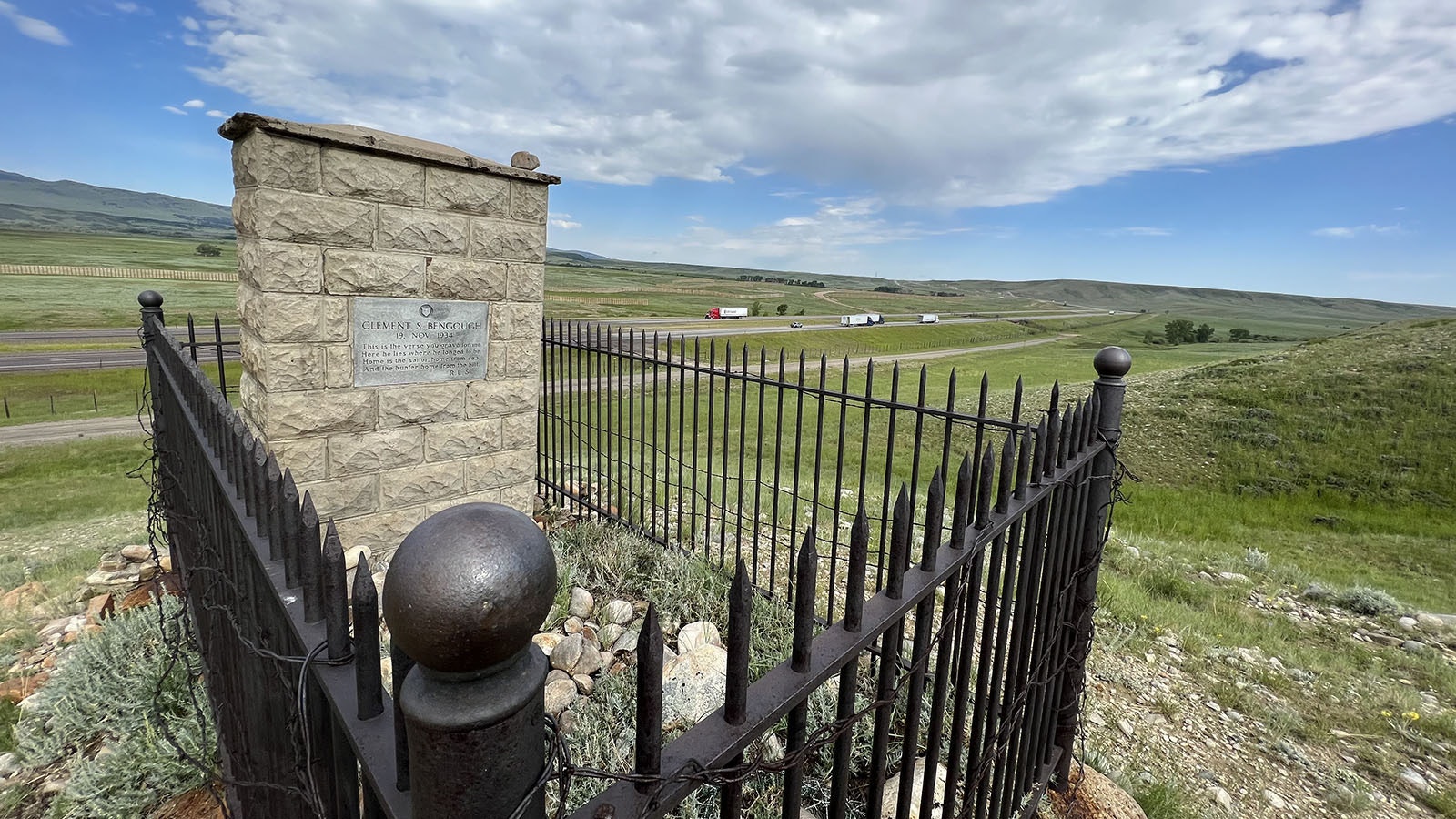In the great open spaces between places across Wyoming, it’s easy to miss when you’re trying to make good time driving across Interstate 80.
But those who pay attention are often surprised to see a lonely, grand gravesite perched atop a hill in Albany County overlooking I-80 between mile markers 283 and 282 just north of the westbound lanes.
The large and elegant headstone marks the last resting place of someone, and the wrought iron fence around it is laced with barbed wire to protect it from wildlife.
This must be someone important to local or national history, right? Why else would the grave be so obviously put on display?
Nope.
But in a way, that makes it all the more interesting. Turns out this grave in about the most public space possible is the final resting place of a notorious hermit and recluse whose story begins halfway around the world.
Who Is Clement S. Bengough?
The grave holds the remains of Clement Stuart Bengough, born Jan. 14, 1861, in Gloucestershire, England, and died Nov. 19, 1934, in Laramie, Wyoming.
While born into a wealthy and important British family, Bengough was the second son, which meant his brother was in line to inherit the family’s status and wealth. So, he came to America and moved West.
Eventually, he found his way to Laramie and established a modest one-man ranch in western Albany County in 1895.
“He was a British semi-nobleman,” said Judy Knight, a retired University of Wyoming professor and author of more than a dozen books about Laramie and Albany County history.
“He wasn’t going to inherit the family estate in England. He was the second son, and the oldest son always inherited,” she said. “He was given a stipend, and he came to Wyoming.”
He built a small, modest cabin and ran a small herd of cattle on his ranch.
“He also had beautiful English horses — or a horse, anyway,” Knight said. “He also had some dogs, kind of a nasty breed of dogs, and lived as a recluse. He did not go to town if he could avoid it.”
In fact, rather than go into town to buy books or visit the public library, Bengough would order reading material and have it delivered to him. That’s how he got one of only a couple of friends he had, his postman.
“His cabin when he died was just completely full of books and other things,” Knight said. “His closest friend was the mailman who brought him all his books.”

A Bundle Of Contradictions
Although born in England and raised to be a British gentleman, Bengough seemed to come to embrace the Wyoming spirit and cowboy way, Knight said.
In fact, when his older brother died, some reports say he turned down a $300,000 inheritance that would’ve required he return to England.
“He was being a dude before there were dude ranches,” Knight said, adding he had quite a reputation around Laramie and the region. “They all called him a hermit and people didn’t know what to make of him.”
In some ways, Bengough was a bundle of contradictions. Born to a wealthy family in England, he lived a modest life of a rancher in Wyoming. But he still rode a grand English horse. He would take cold showers outside. And his best friend was the mailman.
“But his speech was elegant when he did decide to talk to you,” Knight said, adding he was fluent in Latin and Greek.
About That Burial
So why would someone who lived as a recluse and only interacted with his mailman want to be on display for everyone to see?
Turns out, that probably wasn’t Bengough’s idea, Knight said. In fact, the circumstances of his burial provide some of the most entertaining — and suspect — details of Bengough’s story.
What is likely is that he’s buried right where he wanted to be, she said.
“He wanted to be buried on the land, and that is part of the land that he owned. His cabin is completely gone now, but the grave is still there,” Knight said.
Local legend verges from there. There’s a debate about which way he wanted to be facing when buried, and some even say he wanted to be buried standing up.
Knight said those details likely had more gossip behind them than truth.
“There are stories about which end was buried facing which way,” she said. “There’s even some stories that the people who did the burying were a little inebriated. Anything you read about the difficulties with burying him, I would ascribe to lore as opposed to actual fact.”
As to the notion he wanted to be buried vertically, “I discount all of that,” Knight said.
It was probably Bengough’s best friend the mail carrier, or perhaps a neighboring rancher he also got along with, who is believed to have put up the grand headstone and fence, she said.
“I don’t know who put up the marker, but it wasn’t there originally,” she said. “It may have been the postman or a neighboring rancher.”
Whether it was Bengough’s idea or whoever put up his gravestone, the epitaph seems fitting, Knight said. It’s a verse from a Robert Louis Stevenson poem:
“This is the verse you grave for me; here he lies where he longed to be. Home is the sailor, home from sea. And the hunter home from the hill.”

Thanks to Cowboy State Daily reader Marvin Dickinson for asking about the grave on the hill. “I always wondered what the story was behind the grave,” he wrote.
Want to know what the heck something is in Wyoming? Ask Managing Editor Greg Johnson and he’ll try to find out. Send your “What the heck is …” questions to him, along with high-quality horizontal photos of whatever it is to Greg@CowboyStateDaily.com.
Greg Johnson can be reached at greg@cowboystatedaily.com.





